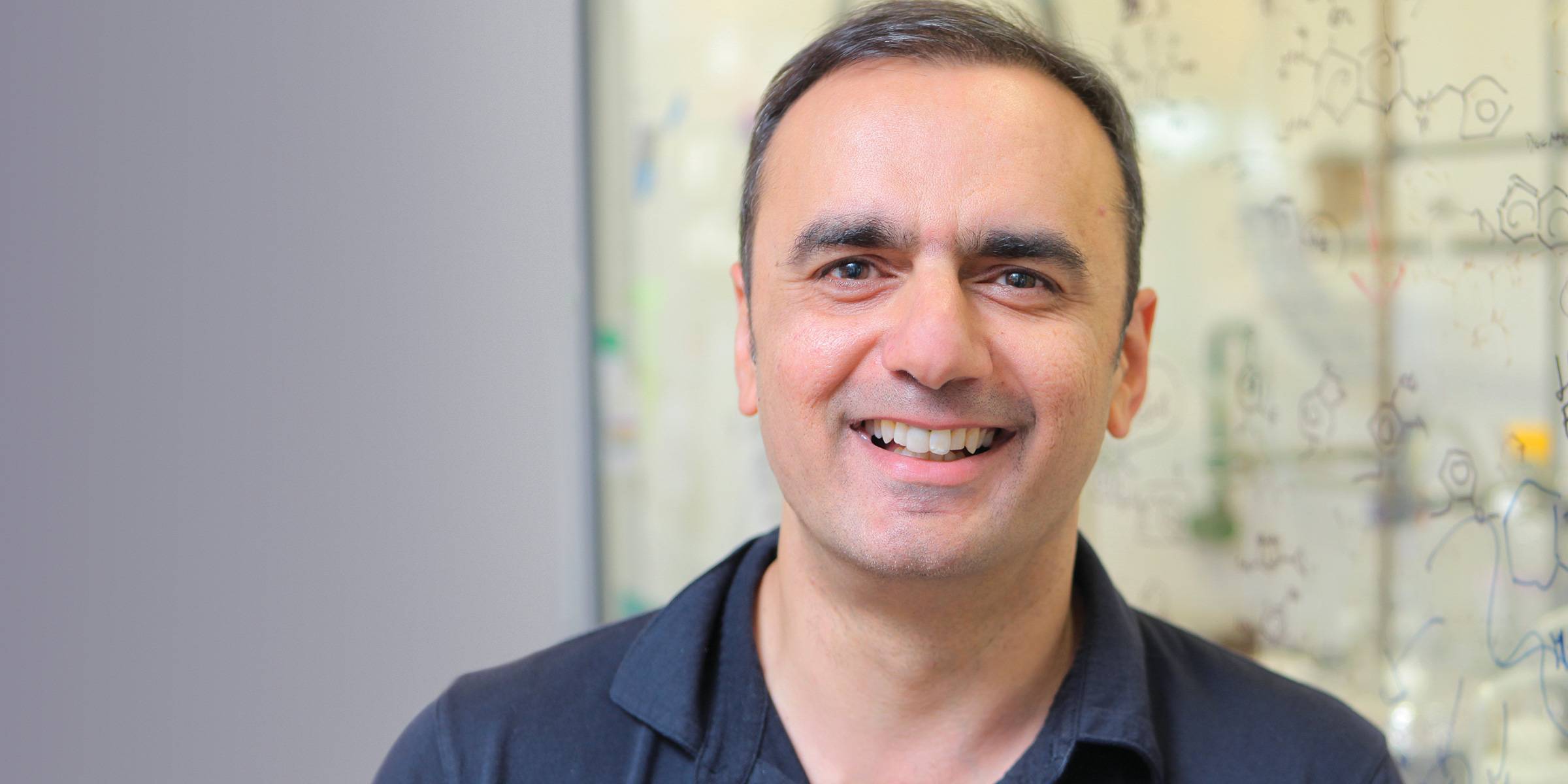Tarun Kapoor, Ph.D.
Pels Family Professor
Kapoor’s lab studies the molecular mechanisms required for accurate propagation of genetic material during cell division, with the goal of developing new therapies to treat cancer. Research in the lab has two areas of focus: discovering and developing new tools to probe protein function, and using them to dissect dynamic cellular processes such as cytoskeleton organization and cell division.
To study a dynamic cellular process—such as the preparations for division—scientists often need to disrupt the function of key proteins involved in it. The Kapoor lab develops chemistry-based tools and methods to study these dynamic processes, and much of their effort focuses on drug-like small-molecule inhibitors. They use these compounds to dissect the processes required for the accurate propagation of the genome to daughter cells during division, proper assembly of the cytoskeleton, and to develop new cancer therapies.
Using multidisciplinary approaches, the lab has identified chemical inhibitors for members of a family of enzymes called ATPases, with a special focus on those required for cell division (kinesin-5, cytoplasmic dynein, Polo-like kinase, and spastin). These inhibitors are now widely used as probes of cellular mechanisms and of protein activity and shape, and they have aided the development of drugs that have entered clinical trials. Recent work in Kapoor’s lab focuses on identifying compounds that inhibit the SARS-CoV-2 helicase, an ATPase required for viral replication.
In parallel, Kapoor’s group has devised approaches to determine the mechanism by which a compound achieves its effect, with the goal of better anticipating and overcoming drug resistance. One of these approaches, called DrugTragetSeqR, uses high-throughput sequencing to identify mutations in cancer cells that can confer resistance to a compound of interest. The other approach involves testing the effects of inhibitors on proteins engineered with mutations, in order to determine the mechanism by which a compound achieves its effect—knowledge that can guide chemical modifications of the compound to increase potency and specificity and also help address resistance. The lab used this strategy to design spastazoline, a first-in-class chemical inhibitor of the protein spastin, which severs cellular structures called microtubules.
The Kapoor lab uses these tools and approaches to dissect biological mechanisms, with a major focus on the assembly and function of microtubule-based structures critical for cell division. For instance, the lab has shown how two proteins, PRC1 and kinesin-4, mark the plus ends of microtubules with tags proportional to the length of the microtubules. These tags may help the cell select and organize microtubules into structures called anaphase spindles, which help segregate chromosomes and position the site of cell cleavage. The lab also used chemical inhibitors to reversibly “trap” living cells at different intermediate stages of division and dissect how errors in chromosome-spindle attachment arise, are detected, and then corrected. In textbook models, chromosomes become aligned at a position known as the metaphase plate after each chromosome attaches to the opposite ends of the spindle (a phenomenon called bi-orientation). The lab’s work overturned this dogma by providing direct evidence that aligned chromosomes provide tracks along which unaligned chromosomes can be transported to the proper position. Most recently, the lab has determined the structure of the γ-tubulin ring complex, an essential regulator of microtubule formation. The lab’s findings may facilitate the development of new cancer therapeutic strategies that target cell division and microtubules.
Kapoor is a faculty member in the David Rockefeller Graduate Program, the Tri-Institutional M.D.-Ph.D. Program, and the Tri-Institutional Ph.D. Program in Chemical Biology.
